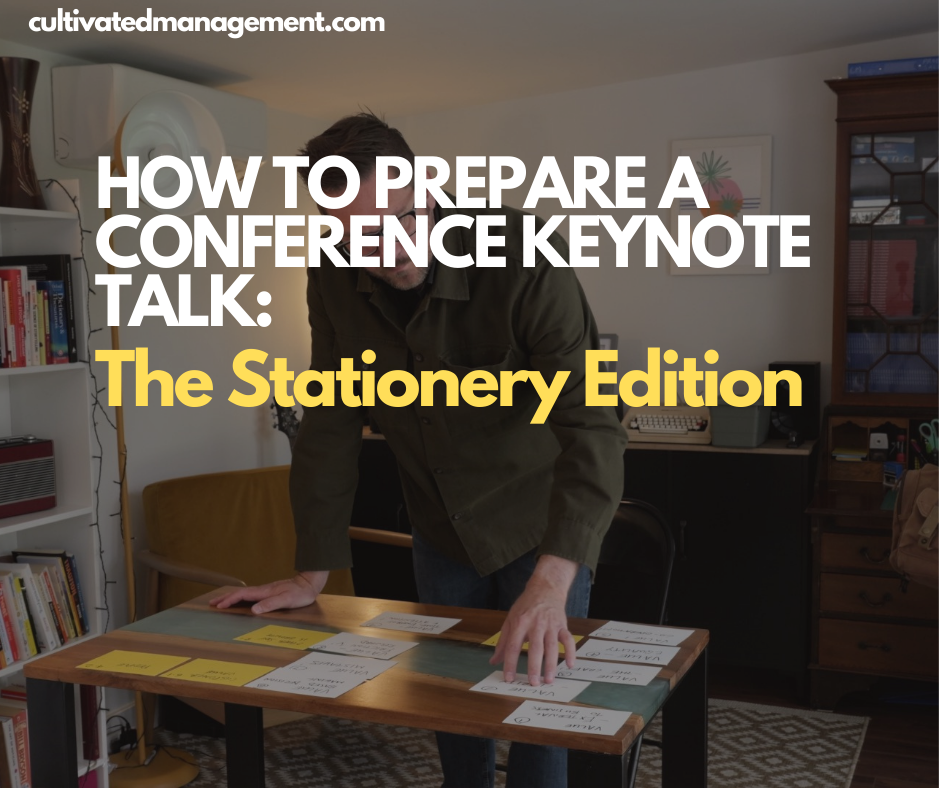
Most people overcomplicate preparing a talk and skip essential aspects. After all, a successful talk or keynote starts WAY before they take to the stage.
They open PowerPoint way too early, cram in too much content, and end up relying on slides instead of their own voice. They wing it with confidence, hope for the best and don't do the prep needed to lodge the talk in their head.
This results in the audience being underwhelmed and disengaged. And all talks should always be about respecting the time, energy, attention (and money), of the audience.
It doesn’t have to be that way. Whether you’re presenting in the boardroom or stepping on stage at a conference, a simple and thorough, repeatable process can transform how you prepare.
Here’s the five-step method I use — sharpened by years of coaching, consulting, and keynotes — and powered by stationery. Well, it would include stationery as you I'm a stationery freak.
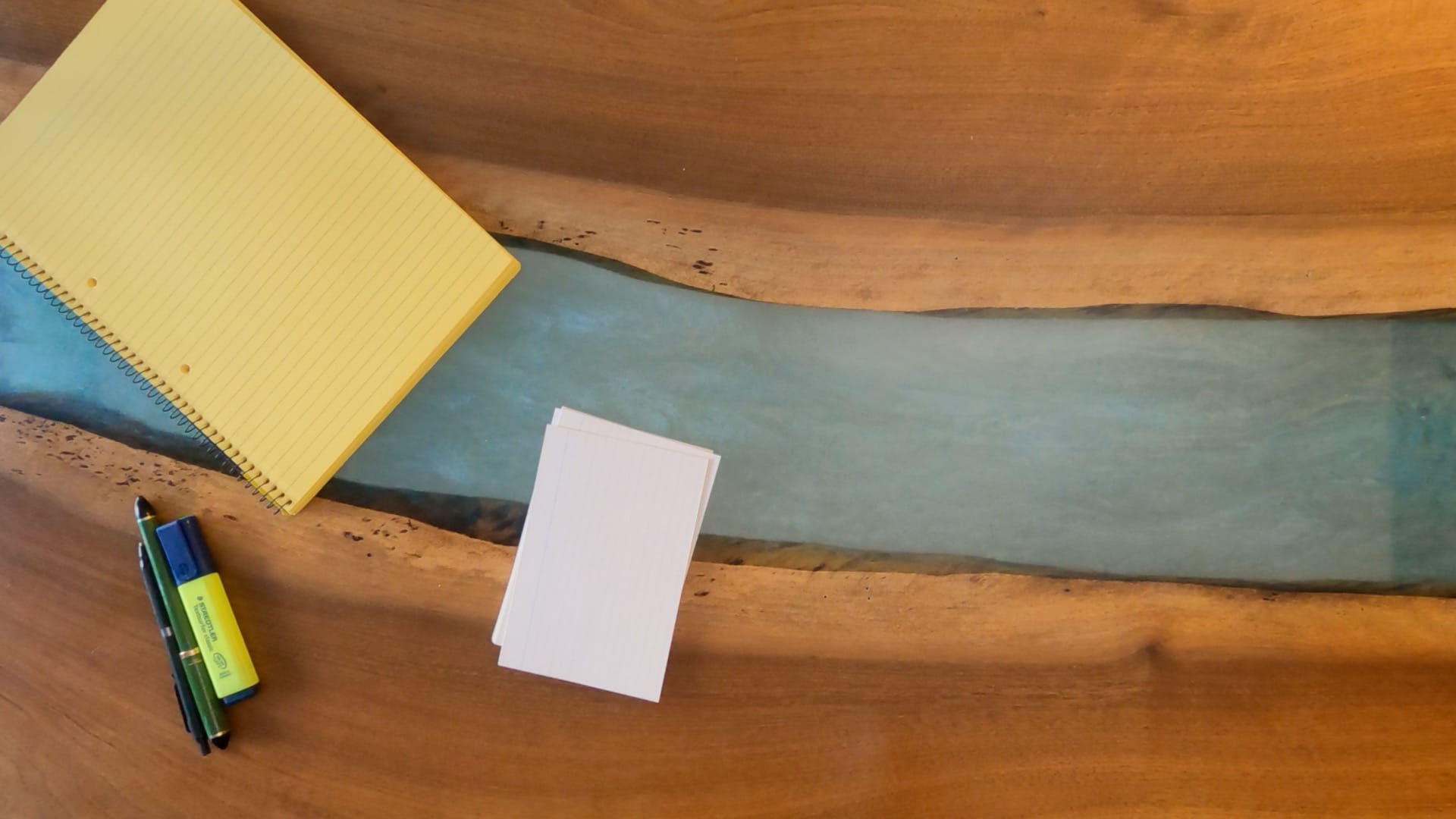
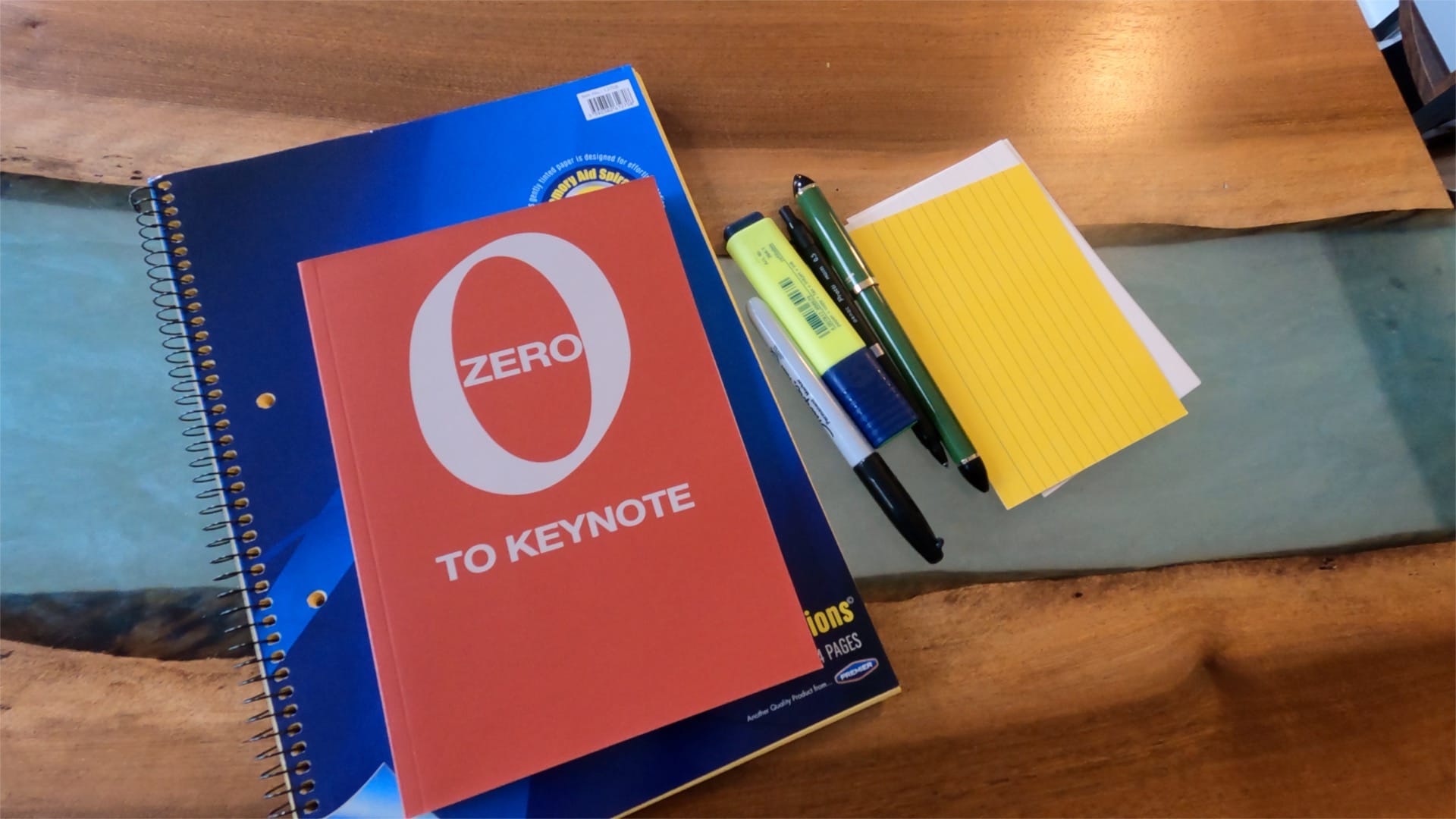
Watch the video or read on for more.
What follows are elements out of my book Zero to Keynote.
My book Zero to Keynote is now out in print and digital. It’s a step-by-step guide to speaking at conferences—from sparking ideas and submitting proposals to crafting your talk, rehearsing, and delivering a presentation that stands out.
Step 1: Start With the Idea
Every talk begins with a single idea.
And yes, your idea is worth sharing. Nobody else has your lens, your stories, or your experience. What matters is shaping it into something worth listening to.
So, where do ideas come from?
- A hopper (notebook or digital filing system) filled with ideas, observations, thoughts and anything that interests you.
- A digital folder of interesting references, design ideas and quotes – kind of like a commonplace book.
- Asking, “What challenge am I wrestling with right now?” – and then letting your subconscious mind get to work giving you ideas, whilst you make food, work or go to the gym.
- Forcing random connections between unrelated words – this one is very good.
- Using images for inspiration and ideation.
- Listening to music that switches up your emotions and feelings.
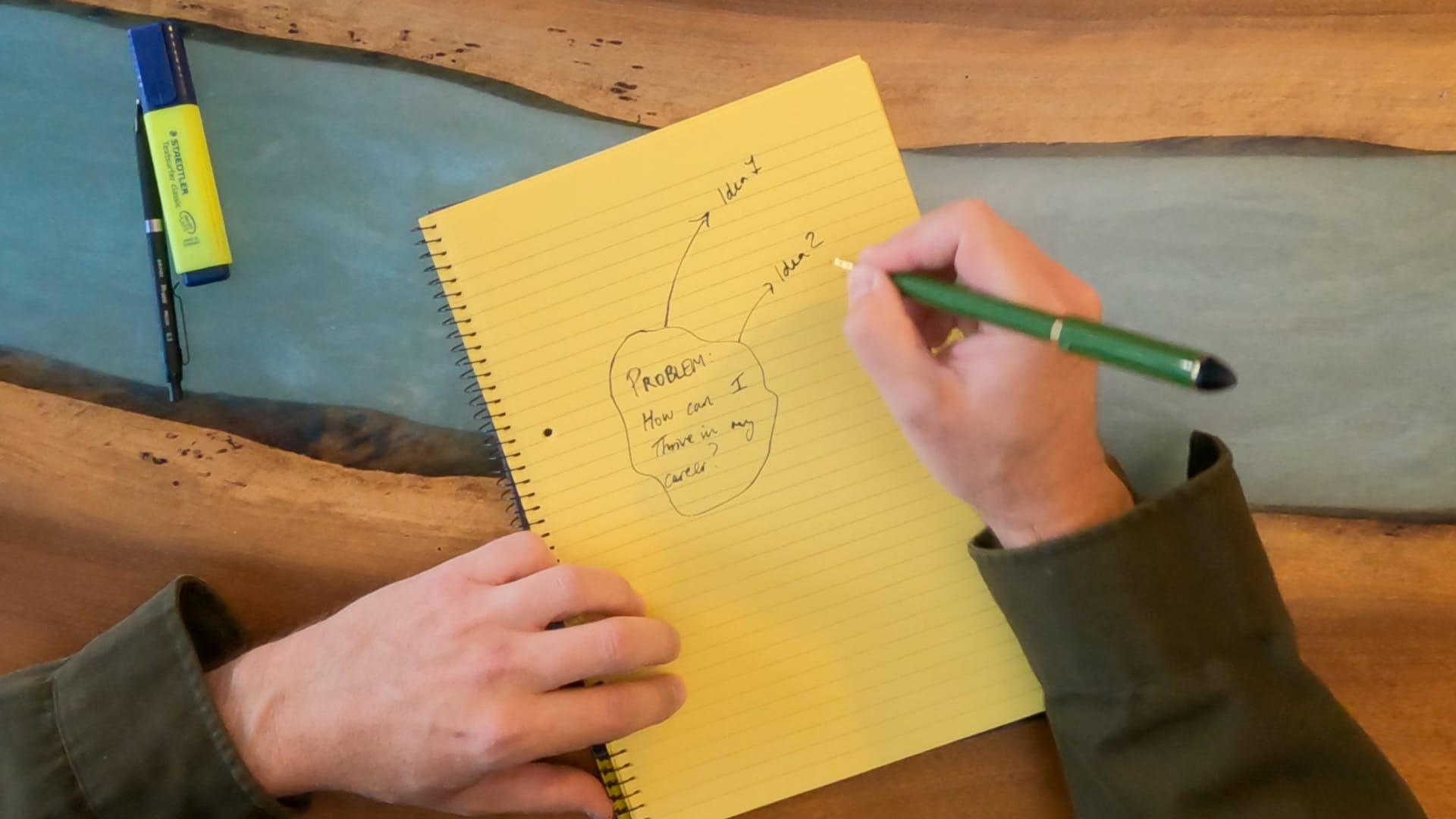
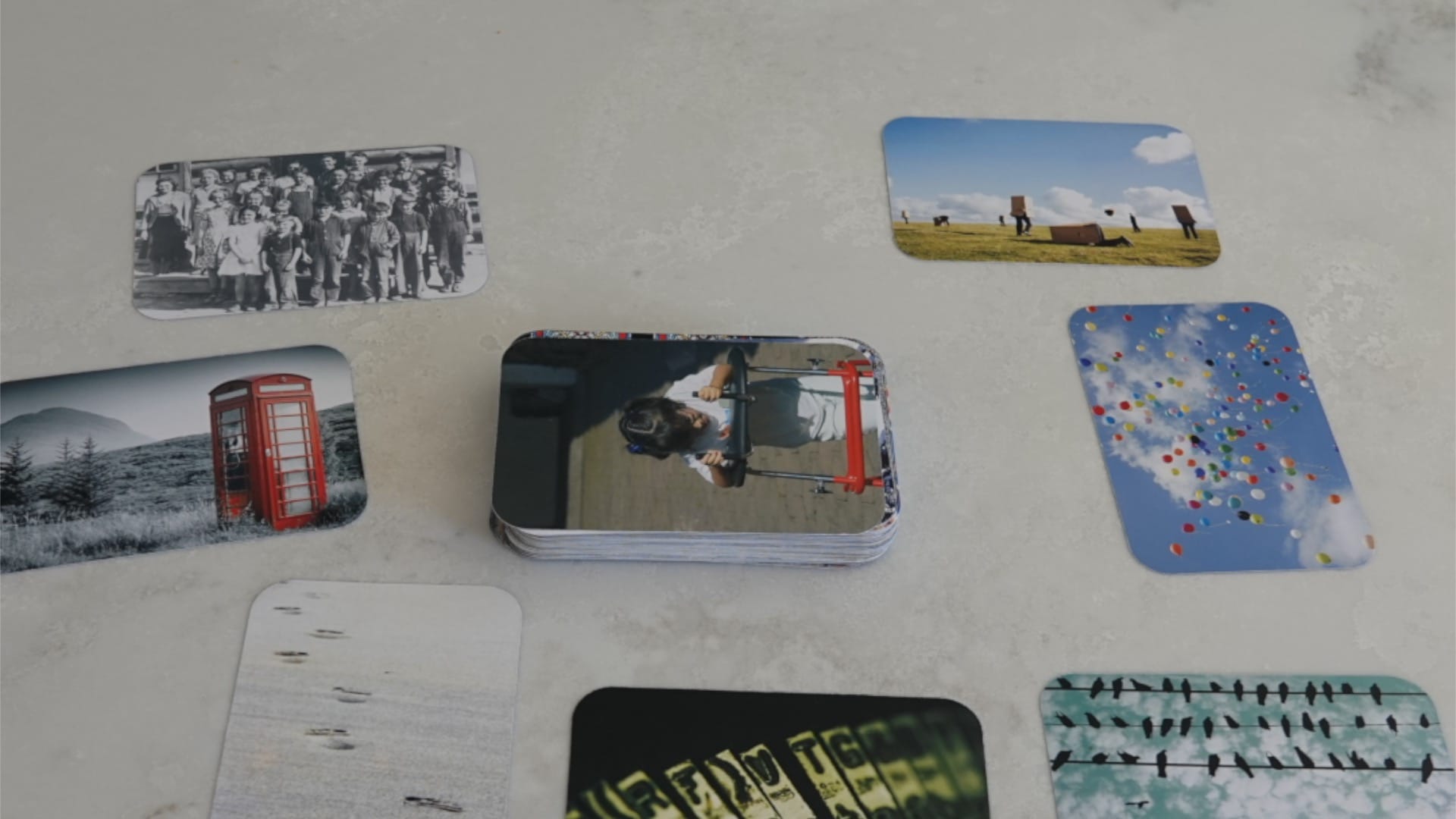
Ways to generate ideas
Personally, I always reach for an A4 yellow legal pad notebook (aff link) and a new edition to my writing collection - a Sailor Fude De Mannen ink pen (aff link) at this stage.
The size of the page forces me to think big and the permanence of the ink makes me commit – I also get to see the edits and mistakes which is often a form of serendipity.
Analogue tools free me from distractions and help connections emerge.
If you'd like the entire chapter about idea generation from Zero to Keynote - it's available as a free PDF download.
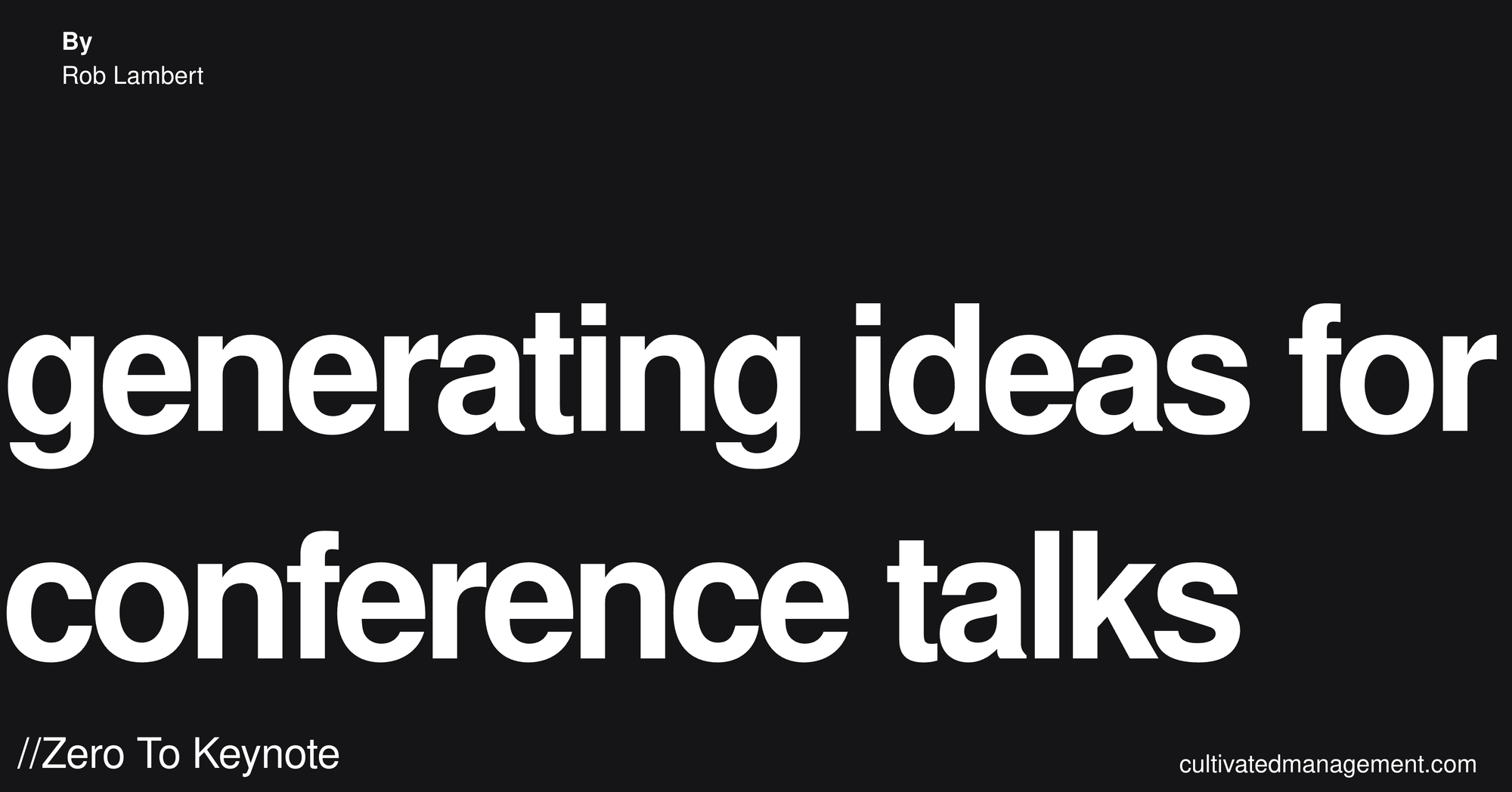
Generating Conference Talk Ideas
Immediate PDF download with a free chapter from the Zero To Keynote book about generating ideas.
Step 2: Structure With Index Cards
Once I’ve got an idea, I need to break it apart and give it shape. At this stage I'm orientating the structure around the big idea, the thread, the perspective, the flow – the point of view. A thread that gives the audience value and ties the talk together.
I use index cards (these coloured Amazon Basics do the trick nicely - aff link) — one point of the talk per card. Don't confuse these as being placeholders for slides – slides come last!
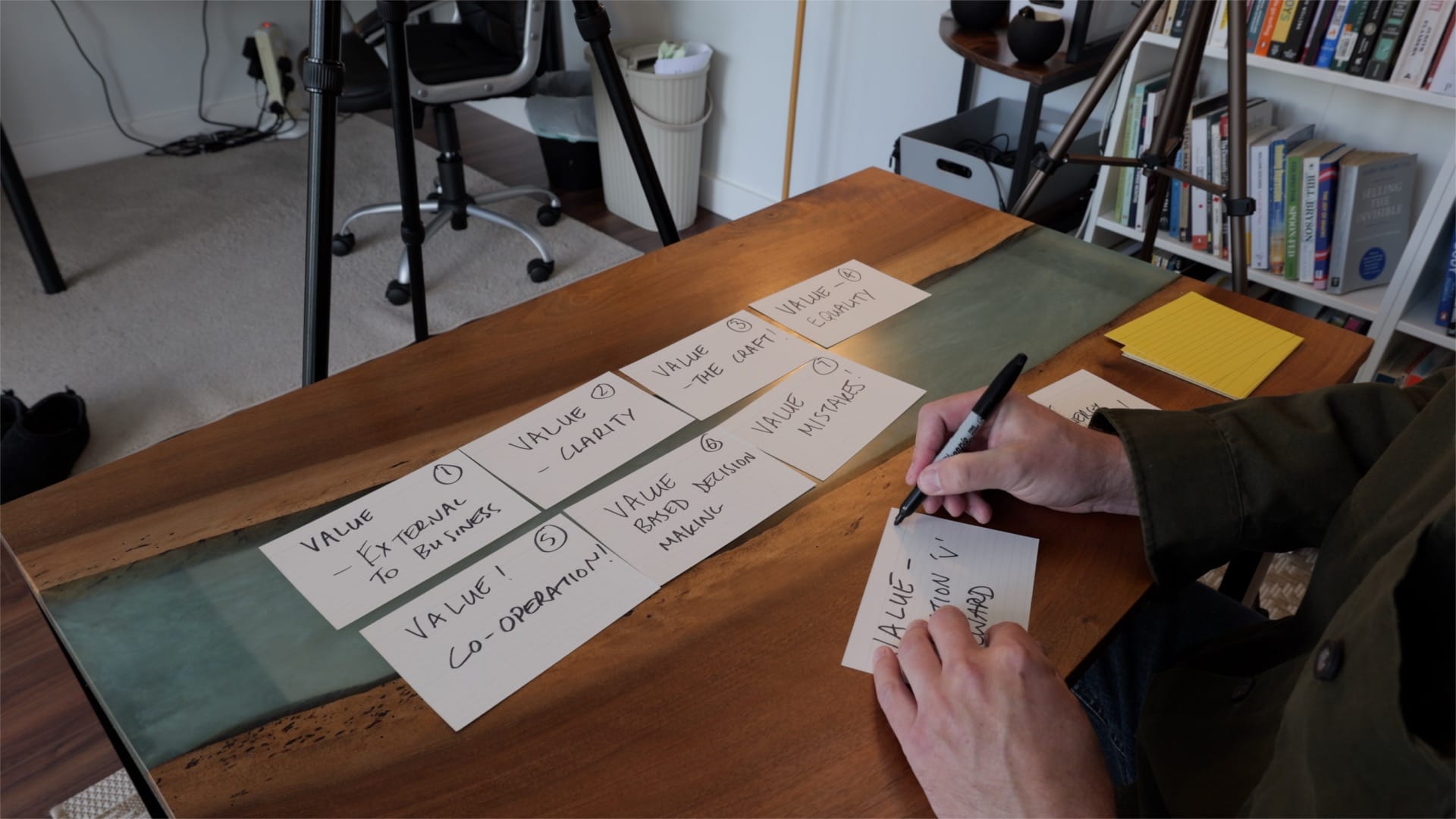
After writing them all out, I shuffle them around, X-Factor style, until a clear story emerges. Sometimes it’s problem → detail → resolution → lesson. Other times it’s simply a list.
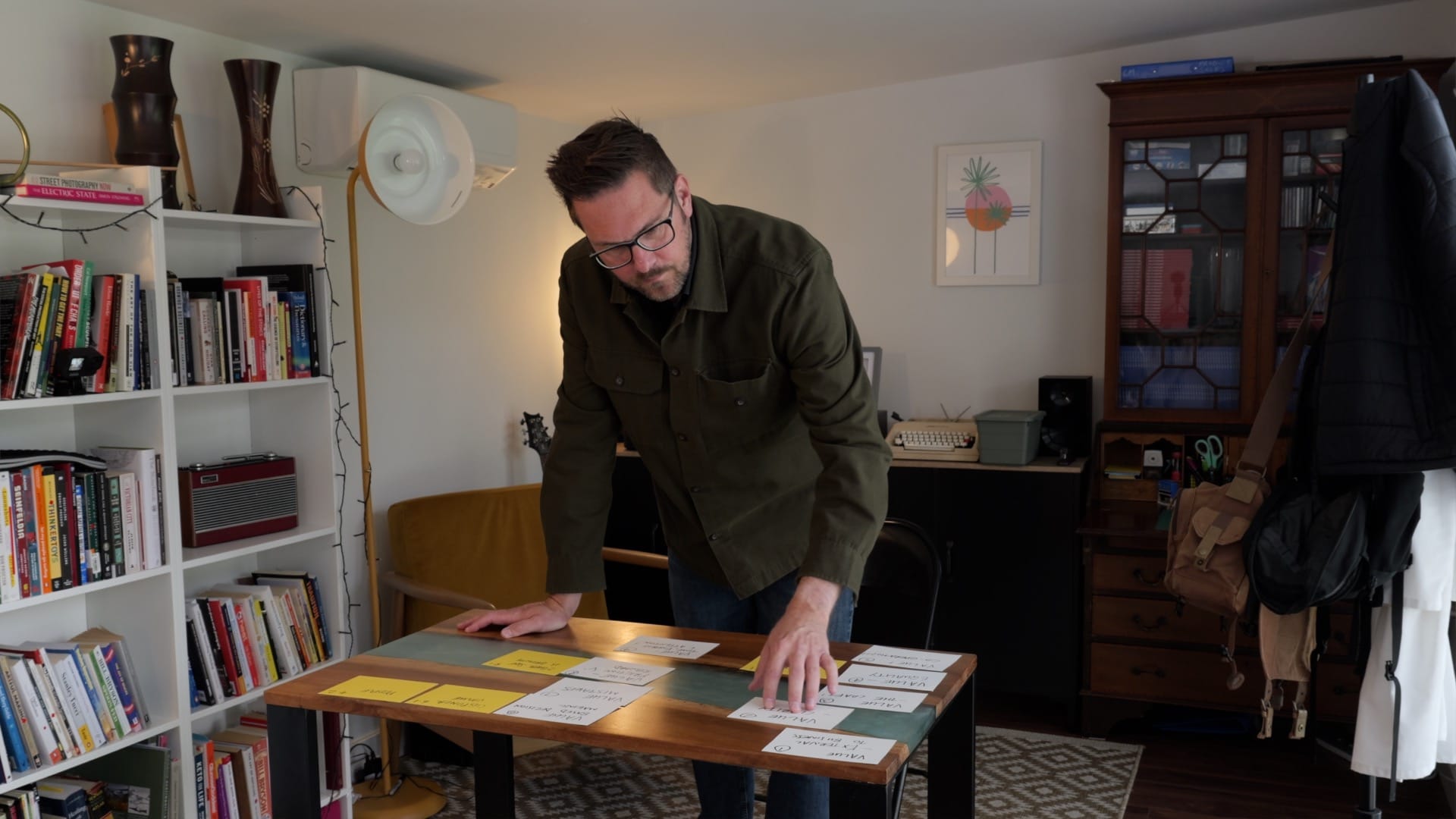
The principle is the same as my core business offering: clarity beats everything. If I'm not clear about the thread, the perspective, the point of view – then neither will the audience.
- I use white index cards for the main topics.
- I use different coloured cards for supporting points, quotes and details.
- I number them so I don’t panic if they fall on the floor.
- I stick them on a wall, or over my desk, so the whole story is visible at once.
Here’s the rule: slides come last. Too many people build slides first, then feel trapped by them. Remember — you are the talk – the slides support you.
Step 3: Draft Digitally, Edit Analogue
Once the structure feels right, I move into digital drafting. I use a writing tool called Lattics, but any tool that makes reordering sections easy will do.
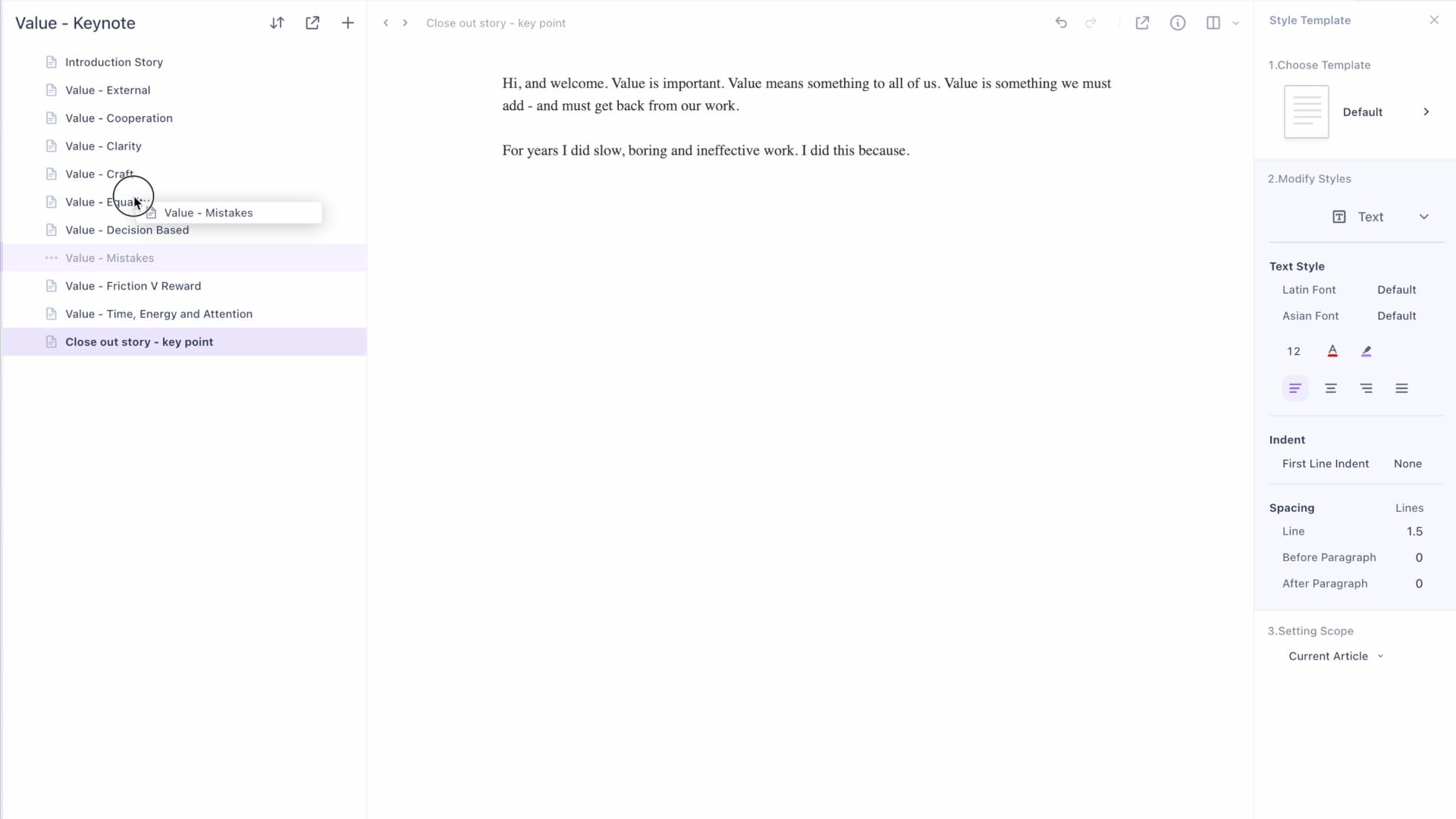
The trick to saving time and getting a good draft is to write like you speak. Avoid jargon. Cut corporate fluff. Try not to use words you wouldn't normally say. Write more informally than you would at work. Your audience wants clarity and authenticity, not buzzwords.
When writing your script aim for the desired word count as the first test of length and duration. We typically speak around 120 - 150 words a minute - so aim for the appropriate amount of words.
When you're nervous on stage you may speak quicker than that – but don't compensate for that with more words in your script. Instead work to deal with your nerves and control the pace of your delivery.
At this point I print the draft and switch back to stationery for what is called a Read Around. This is where you read the script you've written aloud : my Sailor Fountain Pen and highlighters rule the day here.
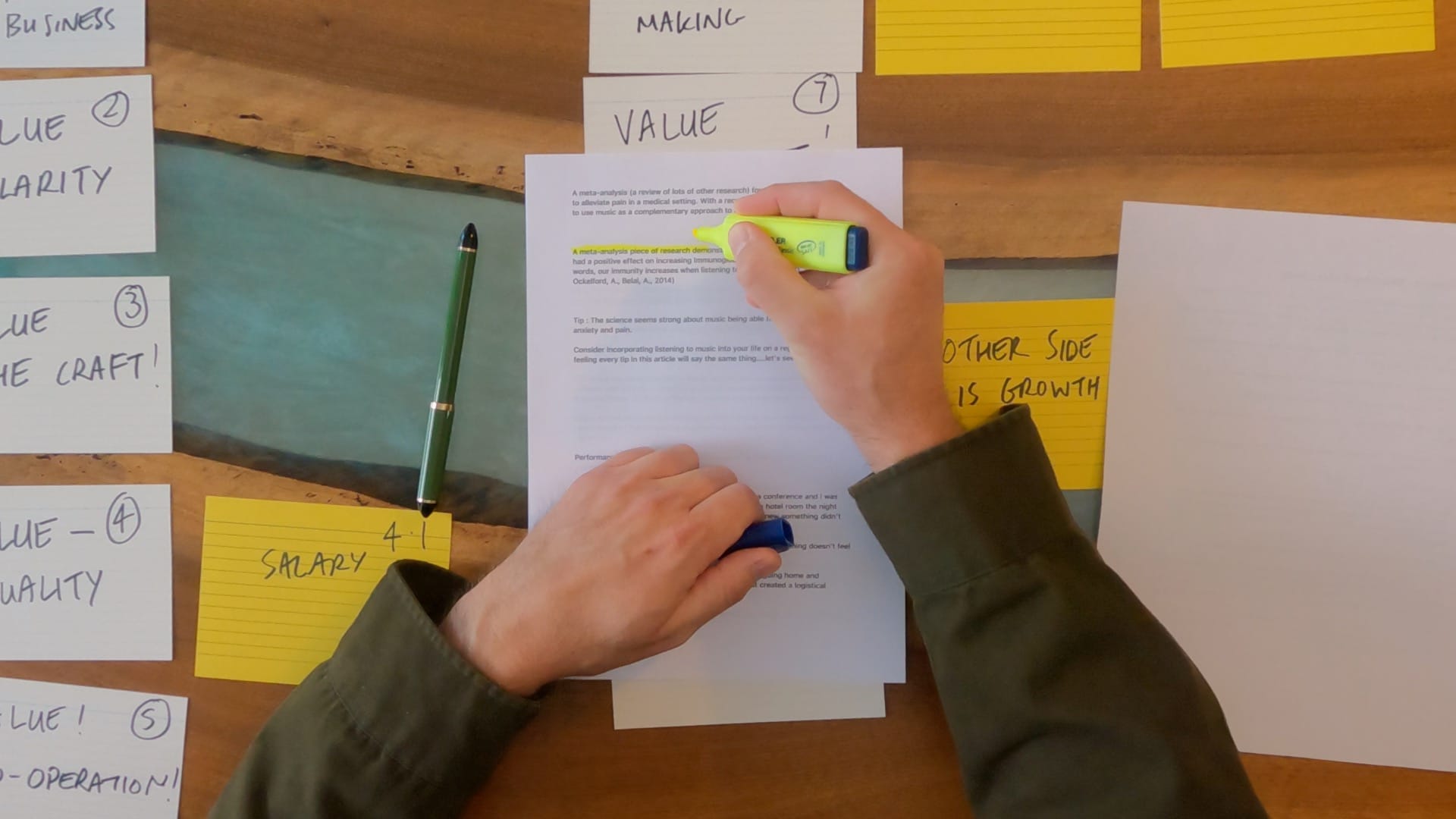
Reading aloud, highlighting awkward phrases, and scribbling notes forces me to hear how it sounds, not just how it looks. The goal here is to cut out phrases and weird sentence structures that don't sound like you. Imagine someone was stood in front of you whilst reading it – make it sound like you're talking to them.
This loop — digital drafting, analogue editing — continues until the words sound natural.
I will also test the timing at this stage also - ensuring I leave time for questions too!
Step 4: Commit It to Memory
Here’s where most presenters fall short. They skim their slides a few times, hope for the best, and wing it.
That’s not preparation — that’s gambling with your audience's time, energy, attention and money – not to mention the investment the conference are making in you – and of course, your own reputation as a good speaker.
Instead, I handwrite the talk in full – and recommend you do the same.
I always use an A4 legal pad with a pencil. My pencil of choice is a mechanical pencil – the Penac Protti 0.5, gifted to me by Penac via the Stationery Freaks podcast.
(I have no affiliation with Penac – it was pure gift – I did an honest review on the podcast with Helen).
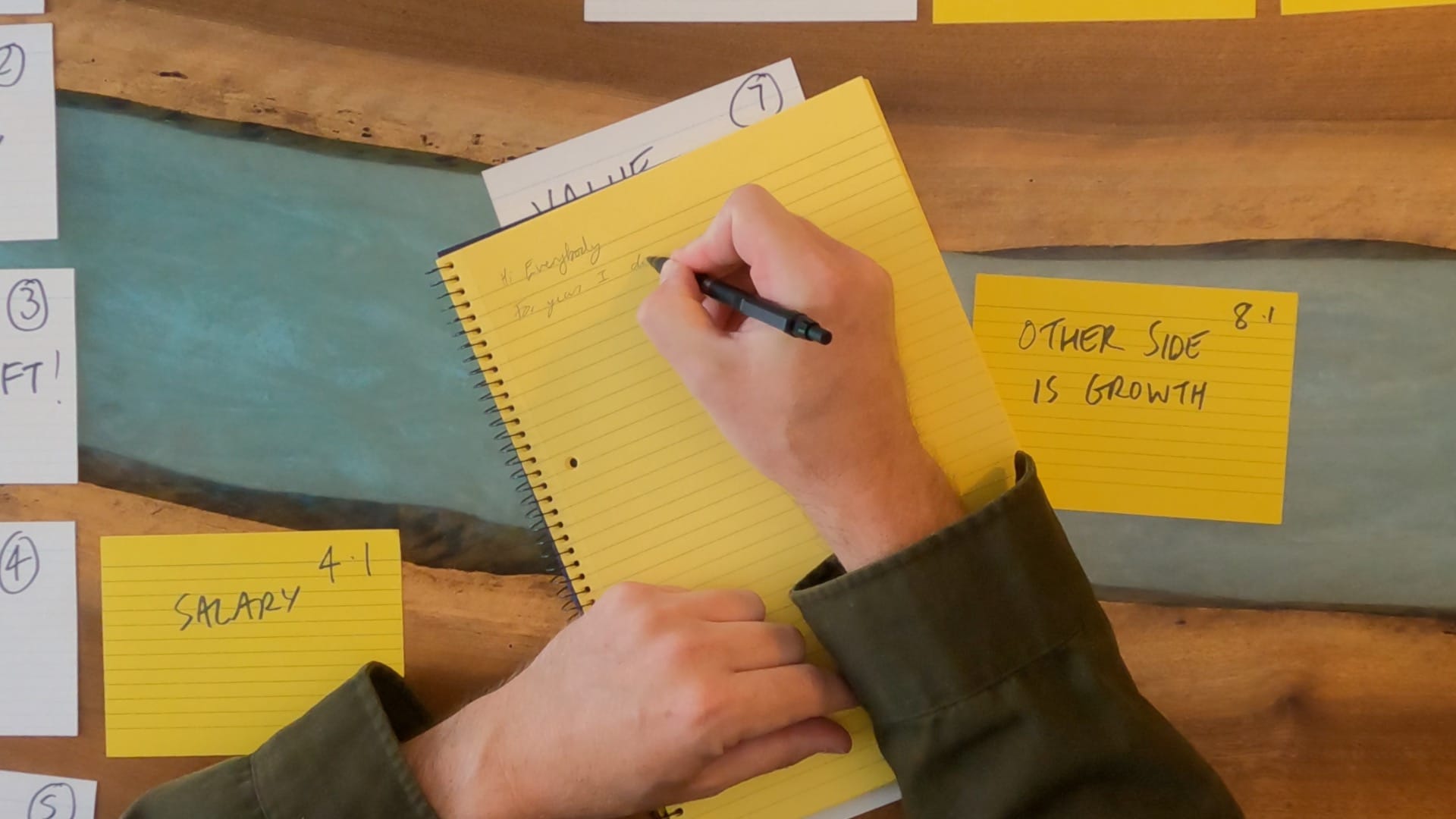
Writing by hand cements the words in memory. It reveals weak spots. It makes the talk stick in a way reading never does. By the time I step on stage, I know the flow, talk and structure so well I can adapt — speed up if I’m behind, slow down with an anecdote if I’m ahead, deal with unruly audience members or deal with any technical problems.
I probably write the talk out two or three times. I am not writing to remember it, I am writing to never forget it.
Trust me, this process works. I can dig out an old keynote from 20 years ago and still deliver it from memory.
My book Zero to Keynote is now out in print and digital. It’s a step-by-step guide to speaking at conferences—from sparking ideas and submitting proposals to crafting your talk, rehearsing, and delivering a presentation that stands out.
Step 5: Slides and Delivery
Only now do I build slides. And I keep them simple. They’re for reinforcing, not replacing, me and my delivery. If the slides could tell the talk by themselves, there would be no need for me to present.
Then I rehearse. Out loud. With a timer. Several times.
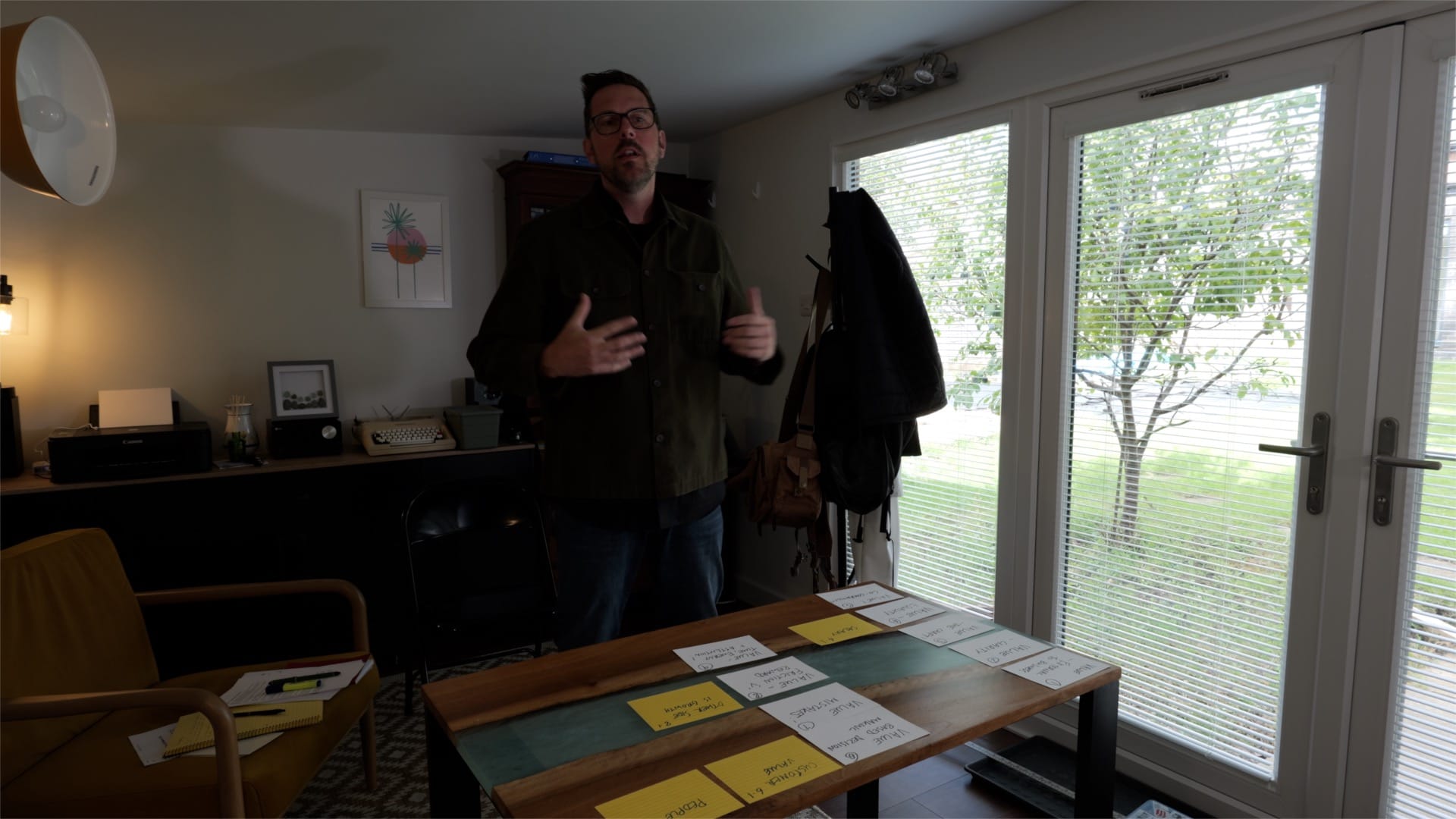
And here’s the secret: the best cure for nerves is preparation. When you know your talk inside out, you no longer fear getting lost, forgetting your lines, or freezing. Confidence comes from clarity and practice.
Almost all of the work for a great talk, whether a keynote or track session, is done WAY before the presenter hits the stage.
Why This Process Works
Audiences give you their most precious resources — their time, money, energy and attention. The least we can do is respect that with a clear, valuable, and professional talk. A talk that is well structured, well thought through, professional, seamless, rehearsed and delivered with confidence.
This process works because it blends the best of both worlds:
- Analogue tools (notebooks, index cards, pens) give you space to think, remember, and commit – a time away from digital distractions.
- Digital tools give you speed, flexibility, and efficiency.
Together, they create talks that are well-structured, natural, and memorable.
Final Thought
If you’re preparing a workplace presentation or a conference keynote, don’t start with slides. Start with stationery.
Your ideas deserve more than bullet points on a screen or scrap notes. Your audience do too. They deserve a process that makes them clear, powerful, and unforgettable – and delivered with confidence.
My book Zero to Keynote is now out in print and digital. It’s a step-by-step guide to speaking at conferences—from sparking ideas and submitting proposals to crafting your talk, rehearsing, and delivering a presentation that stands out.
